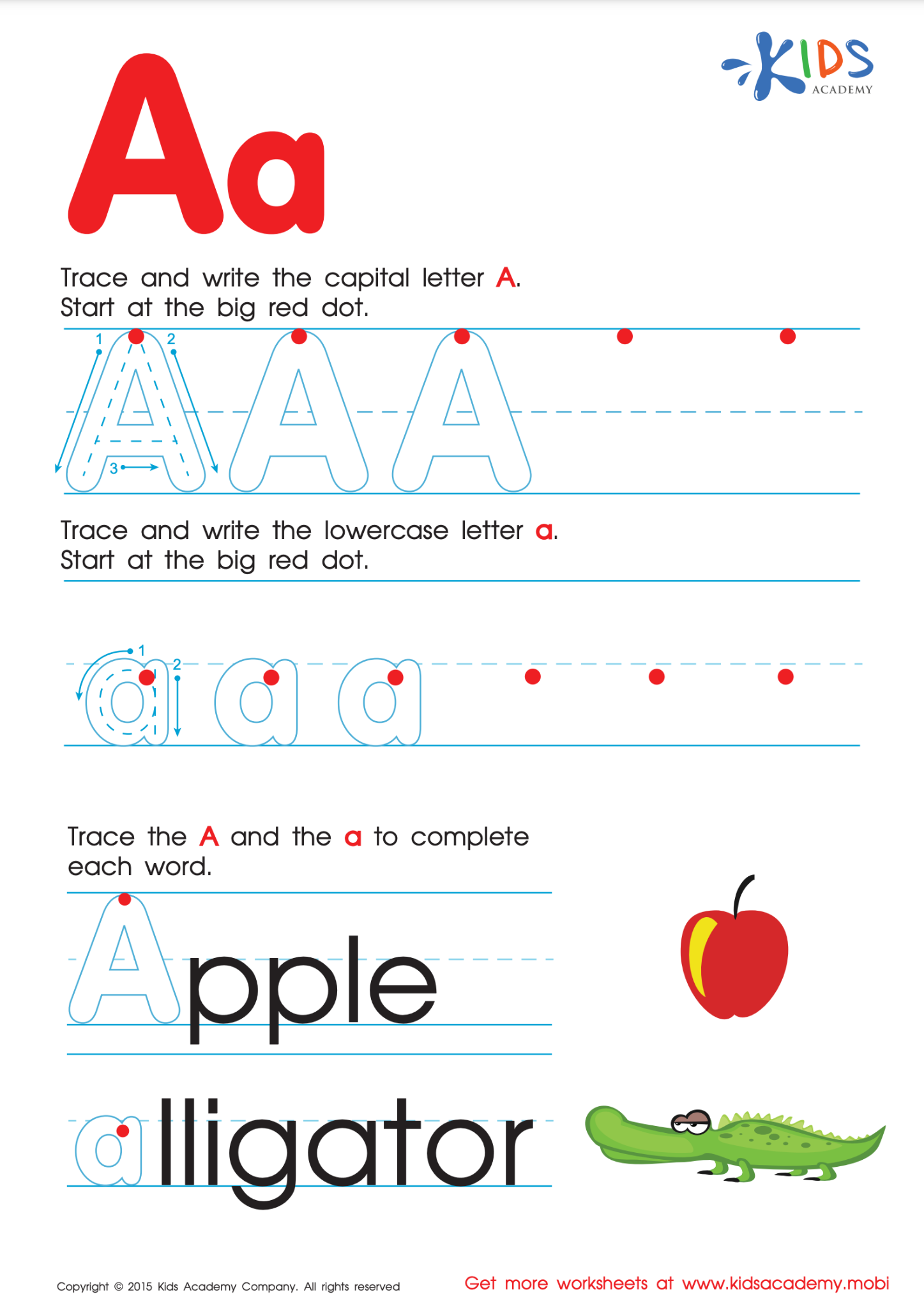-
English
-
English Pre-K
-
Unit 1: Early Literacy Skills
-
ABCs
- Pre-writing Activities
- Letter A
- Letter B
- Letter C
- Letter D
- Letter E
- Letter F
- Letter G
- Letter H
- Letter I
- Letter J
- Letter K
- Letter L
- Letter M
- Letter N
- Letter O
- Letter P
- Letter Q
- Letter R
- Letter S
- Letter T
- Letter U
- Letter V
- Letter W
- Letter X
- Letter Y
- Letter Z
-
Phonological Awareness
- Rhyming Words
- Letter Sounds B, C, D, and F
- Letter Sounds G, H, J, and K
- Letter Sounds L, M, N, and P
- Letter Sounds Q, R, S, and T
- Letter Sounds V, W, X, Y, and Z
- Letter Sounds A, E, and I
- Letter Sounds O and U
- Beginning Sounds
- Matching Letters to Sounds
-
ABCs
-
Unit 2: Vocabulary
-
Common Words
- Sorting Words into Categories
- Color Words
- Verbs and Adjectives
-
Sight Words
- Sight Words 'I' and 'Can'
- Sight Words 'You' and 'Like'
-
Common Words
-
Unit 3: Print Awareness
-
Parts of a Book
- Working with a Book
- Spaces Between Words
- Text and Illustrations
-
Picture Books and Poems
- Picture Book Text Features
- Poem Text Features
- Signs and Labels in the Community
-
Parts of a Book
-
Unit 4: Reading Literature
- Questions About Stories
- Discussing Stories
-
Unit 5: Reading Informational Texts
- Retelling Details in a Text
- Questions About a Text
- Connections Between Events
- Text Features
- Describing Illustrations
-
Unit 1: Early Literacy Skills
-
English Pre-K
-
Math
-
Math for Pre-Kindergarten
-
Logic and Geometry
-
Matching and Sorting
- Same and Different
- Which One Is a Little Different?
- Objects That Go Together
- Sorting by Color and Size
- Sorting The Same Group in Different Ways
- Patterns
-
Shapes
- Shapes in Our Environment
- Naming Shapes Regardless of Size
- Making Shapes in Preschool
- Comparing Shapes
- Relative Positions
- Sorting Shapes
-
Matching and Sorting
-
Early Number Sense
-
Numbers 1–5
- Counting to 3
- Counting to 5
- Arranging Objects up to 3 Objects
- Arranging up to 5 Objects
- Writing Numbers 1–5
-
Numbers 1–5
-
Numbers up to 10
- Counting to 10
- Arranging up to 10 Objects
- Number 0
- Writing Numbers 6–10
- Breaking Down Numbers 6-10
-
Logic and Geometry
-
Math for Pre-Kindergarten
Letter A
Now that your child is in pre-kindergarten, it is time to start learning the ABCs! It is such an exciting time for both of you. Nothing beats the feeling of hearing your child singing the alphabet song with pride. An efficient way to learn the ABCs seamlessly is adopting the “Letter of the Week” strategy. Using this approach acquaints the child with the shape and sound of each letter and helps establish a relation between the two. It is best to learn the letters in alphabetical order, starting with the letter A.
Activities
The first step towards learning the letter A is to familiarize your child with its shape. After they get a good hang of the shape and name of the letter A, you can start introducing the sounds the letter makes. Here are some tips on how to do that:
- Write the letter of the week in upper and lower case on a small board, starting with the letter "Aa" on the first week, and display it somewhere around the study area.
- Watch the "Letter A" video lesson by Kids Academy together to learn more about the letter’s name, shape, and sounds.
- Ask your kid to describe what the letter looks like. For example, the uppercase A is made of two inclined lines and a horizontal line; it has a sharp head; it has a triangle on top; it has two legs…
- Trace the letter A in both upper and lower case. You can print out this Letter A Tracing worksheet from Kids Academy and start with the first exercise. Find the red dot and start tracing from there. After getting acquainted with the shape of the letter, you can move on to the second exercise to relate the shape of the letter Aa with the sound it produces. In the case of this worksheet, your child will learn that the letter A produces the first sound in the words “alligator” and “apple”.

- Color the letter in this Kids Academy Letter A Coloring Sheet, then color the images of the words that start with this letter, “ant” and “apple”. Emphasize the sound the letter makes at the beginning of the words provided in the worksheet.

- Use crafts to reinforce the relation between the letter's shape and sound. For example, you can make an "alligator" out of the letter A. All you need is two googly eyes and small triangles cut from white paper. Then, draw a big "A" on a piece of paper or cardboard, and stick the googly eyes on the outer side of the letter "A" with the triangles inside of it on both sides as if they are teeth.
These activities will help your child learn how to identify the letter "A" within a text, and how to pronounce it. They also serve as practice for the future skill of writing it. Now that they are done with the first letter, they can move on to the second letter B.
You can check out the next articles on how to learn the upcoming letters or previous articles about ELA for pre-k through our interactive catalog below.

